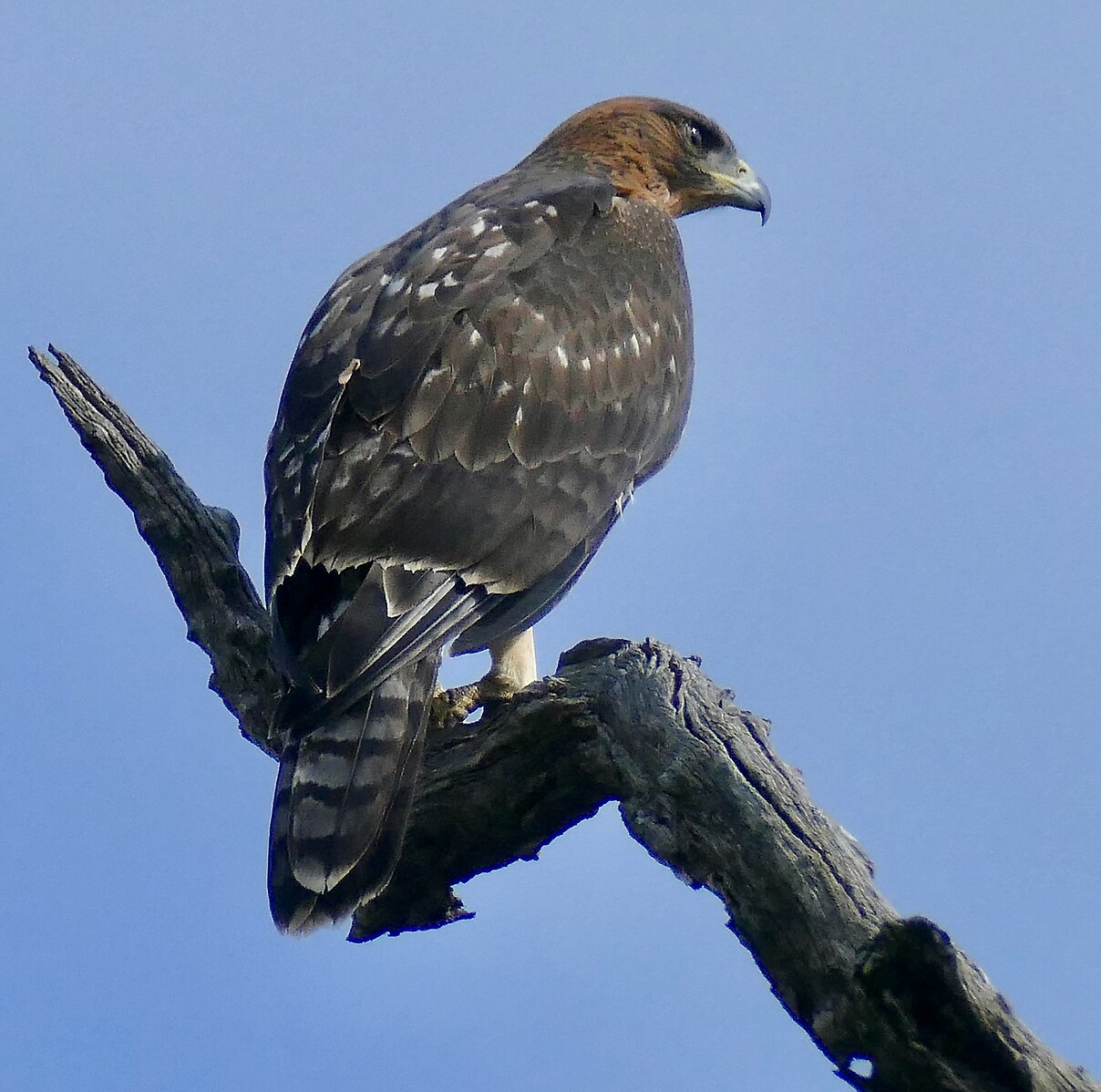Female African hawk eagles are indeed bigger than males. This is a common trait in birds of prey, where the female is typically the larger bird, with the male being smaller. This sexual dimorphism is observed in the African hawk eagle, with the female averaging about 5% larger and up to 20% heavier than the male.
Size Comparison Between Male and Female African Hawk Eagles
In terms of specific measurements, the average length of a male African hawk eagle is around 60 cm (24 in), while the average length of a female is around 65 cm (26 in). The wingspan of males can vary from 130 to 160 cm (4 ft 3 in to 5 ft 3 in), while females have a wingspan of around 2.4 meters. The body mass of males can vary from 1,250 to 1,750 g (2.76 to 3.86 lb), while females can weigh from 1,480 to 2,470 g (3.26 to 5.45 lb).
Reasons for the Size Difference
 Image source: African Hawk-Eagle by Bernard DUPONT
Image source: African Hawk-Eagle by Bernard DUPONT
This size difference is believed to have evolved as a way to reduce competition for food between the sexes, with the female taking on the role of the main food provider for the chicks due to her larger size and ability to take down larger prey. The Nest Defence Hypothesis suggests that the size difference may have originally evolved as a way to defend the nest, with the larger female being better equipped to fend off predators. Over time, this size difference may have been propagated by competition for food between the sexes, leading to the strongly dimorphic species we see today.
Hunting and Feeding Habits
The larger size of the female African hawk eagle allows her to take down larger prey, such as small to medium-sized mammals, birds, and reptiles. The male, being smaller, is typically limited to smaller prey, such as small birds, rodents, and insects. This division of labor helps to reduce competition for food between the sexes, ensuring that both the male and female can successfully provide for the chicks.
Nest Defense and Breeding
The larger size of the female African hawk eagle also gives her an advantage in defending the nest from predators. She is better equipped to fend off threats, such as other birds of prey or small mammals, ensuring the safety of the chicks. This, in turn, increases the chances of successful breeding and the survival of the offspring.
Adaptations and Evolution
The size difference between male and female African hawk eagles is a result of evolutionary adaptations that have occurred over time. This sexual dimorphism is believed to have developed as a way to optimize the species’ survival and reproductive success, with the larger female taking on the role of the primary provider and defender, while the smaller male focuses on smaller prey and supporting the female in the nesting and breeding process.
Conclusion
In summary, female African hawk eagles are indeed bigger than males, with the female being around 5% larger and up to 20% heavier. This size difference is believed to have evolved as a way to reduce competition for food between the sexes and to improve the female’s ability to defend the nest and provide food for the chicks. The larger size of the female also gives her an advantage in hunting larger prey and defending the nest from predators, ultimately contributing to the species’ overall survival and reproductive success.
References:
– Safari Ecology Blog – Why are Female Raptors Usually Bigger?
– Wikipedia – African Hawk-Eagle
– Kenya Bird of Prey Trust – Sexual Size Dimorphism in Raptors

